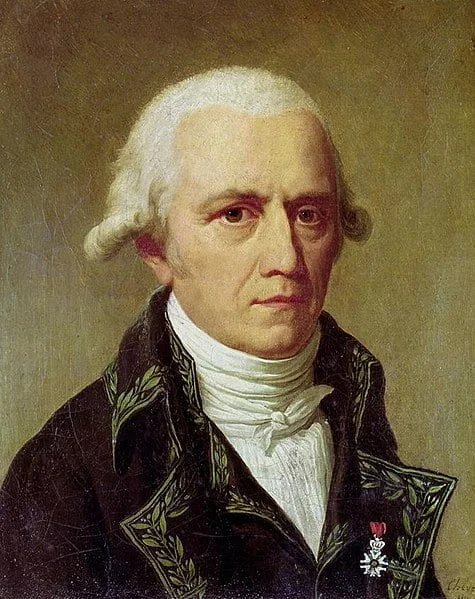Real Celebrities Never Die!
OR
Search For Past Celebrities Whose Birthday You Share

source:wikipedia.org
Luther Burbank
Birthday:
07 Mar, 1849
Date of Death:
11 Apr, 1926
Cause of death:
Heart attack
Nationality:
American
Famous As:
Horticulturist
Age at the time of death:
77
Early Life and Passion for Nature
Luther Burbank, who was born on March 7, 1849, in Lancaster, Massachusetts, didn’t fit the mold of a typical farmer. He was not satisfied with only maintaining the existing crops. Creating new plants, sculpting them into unimaginable forms, and bending nature to his will were his deepest desires. Burbank’s curiosity and work ethic made him a pioneer in plant breeding, leaving a lasting impact on agriculture and inspiring future botanical explorers.
Childhood and Natural Curiosity
Burbank’s childhood was steeped in the natural world. He spent his days exploring the woods and fields around his family’s farm, nurturing a deep connection to the intricate workings of flora. Even as a young boy, he experimented with crossbreeding different plants, showcasing a precocious talent for manipulating nature. This passion soon blossomed into a calling, and Burbank embarked on a journey to learn everything he could about plant breeding and genetics, despite the limited scientific resources available at the time.
Move to Santa Rosa and the Experiment Station
In 1875, seeking fertile ground for his experiments, Luther Burbank migrated to Santa Rosa, California, a region blessed with diverse climates and abundant sunshine. He established his legendary “Experiment Station,” a sprawling 18-acre haven where he meticulously crossbred and selected plants, cultivating thousands of new varieties over the course of his life. Burbank’s approach was unconventional, relying on intuition and observation rather than formal scientific training. He tirelessly experimented, planting, grafting, and hybridizing, often with astonishing results.
Groundbreaking Achievements in Plant Breeding
Burbank’s achievements were nothing short of miraculous. He transformed thorny cacti into spineless pears, doubled the size of potatoes, and created seedless grapes, all through tireless experimentation and selective breeding. He bred disease-resistant plums, drought-tolerant prunes, and developed new varieties of apples, berries, and vegetables, forever altering the landscape of agriculture. His work wasn’t just about aesthetics or yield; it was about improving the lives of farmers and consumers, offering them more resilient, productive, and flavorful crops.
Luther Burbank's Quote's
Expansion into Ornamental Plants and Forestry
Burbank’s impact extended far beyond the realm of fruits and vegetables. He experimented with ornamental plants, creating stunning new varieties of roses, lilies, and gladioli. He even delved into the world of forestry, developing faster-growing trees suitable for timber production. His work on plant breeding techniques and genetics laid the groundwork for future generations of scientists and agriculturalists, paving the way for the modern advancements in crop cultivation we witness today.
Controversy and Legacy
Despite his undeniable achievements, Burbank’s methods weren’t without their critics. Some questioned the scientific rigor of his work, while others raised concerns about the ethics of manipulating nature so extensively. However, Burbank remained undeterred, driven by his belief in the power of innovation to improve the lives of humanity. He was a tireless advocate for environmental conservation and sustainable farming practices, leaving behind a legacy that transcends the boundaries of science and embraces the interconnectedness of nature and human well-being.
Death and Enduring Impact
Luther Burbank’s life ended on April 11, 1926, but his legacy lives on in the countless fruits and vegetables that grace our tables today. His tireless work expanded the boundaries of what we thought possible in the plant world, proving that nature, with a little guidance, can be surprisingly malleable. He was a visionary, a tireless experimenter, and a man who dared to dream of a world where plants could be shaped to serve the needs of humanity. His story serves as a testament to the power of curiosity, the boundless potential of nature, and the enduring impact of a life dedicated to innovation and the betterment of humankind.
Name:
Luther Burbank
Popular Name:
Luther Burbank
Gender:
Male
Cause of Death:
Heart attack
Spouse:
Place of Birth:
Lancaster, Massachusetts, US
Place of Death:
Santa Rosa, California, US
Occupation / Profession:
Personality Type
Logician: Innovative inventors with an unquenchable thirst for knowledge. His thirst for knowledge was beyond comparison. He used to collaborate with other inventors to deepen his knowledge.
Burbank reportedly ate 100 different fruits and vegetables daily, attributing his remarkable health and longevity to this diverse diet
He was awarded over 300 patents for his plant creations, a testament to his prolific and innovative work.
The Santa Rosa Junior College houses the Luther Burbank Home and Gardens, a living museum dedicated to his life and work, showcasing many of his original plant creations.
Despite his lack of formal scientific training, Burbank's work is credited with influencing the development of modern plant genetics and breeding techniques.
He was awarded over 300 patents
He is credited with influencing the U.S. Plant Patent Act of 1930.
He developed hundreds of new species of plants.
